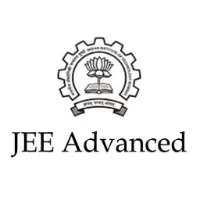Latest Applications Open 2024:
JEE Advanced 2025 Chemistry Syllabus is Available now. The JEE Advanced Chemistry syllabus is an essential component of the Joint Entrance Examination (Advanced) – one of India’s most competitive engineering entrance exams. Chemistry is crucial in this examination, as it assesses students’ knowledge of chemical principles, reactions, and concepts.
The Chemistry syllabus for JEE Advanced is extensive and covers three main branches: Physical Chemistry, Inorganic Chemistry, and Organic Chemistry. Physical Chemistry deals with the fundamental principles of chemistry and their applications. Inorganic Chemistry focuses on the properties and behaviour of inorganic compounds, while Organic Chemistry studies carbon compounds, including their structure, properties, and reactions. Students must understand chemical concepts, equations, and reaction mechanisms deeply. The syllabus includes chemical bonding, thermodynamics, equilibrium, coordination compounds, and organic reactions.
Effective preparation for the JEE Advanced Chemistry section involves mastering theoretical concepts and their practical applications. Additionally, solving many problems and practising previous years’ question papers is crucial for success in this competitive examination. A strong foundation in chemistry is vital for JEE Advanced and future studies in engineering and related fields.
JEE Advanced 2025 Chemistry Syllabus – Available
JEE Advanced 2025 Chemistry Syllabus is Available now. Click to Download the Chemistry Syllabus PDF.
JEE Advanced 2025 Chemistry Syllabus
The JEE Advanced Chemistry Syllabus is an essential component of the prestigious Joint Entrance Examination (JEE) for admission to top engineering institutions in India. This syllabus encompasses a wide range of topics in chemistry, including physical chemistry, inorganic chemistry, and organic chemistry. It is designed to assess candidates’ understanding of fundamental chemical concepts, principles, and their problem-solving abilities. Mastering the JEE Advanced Chemistry Syllabus is vital for students aspiring to secure admission to the Indian Institutes of Technology (IITs) and other premier engineering colleges, making it a crucial element of their JEE Advanced preparation.
General Topics
Concept of atoms and molecules; Dalton’s atomic theory; Mole concept; Chemical formulae; Balanced chemical equations; Calculations (based on mole concept and stoichiometry) involving common oxidation-reduction, neutralisation, and displacement reactions; Concentration in terms of mole fraction, molarity, molality and normality.
States of Matter: Gases and Liquids
Gas laws and ideal gas equation, absolute scale of temperature; Deviation from ideality, van der Waals equation; Kinetic theory of gases, average, root mean square and most probable velocities and their relation with temperature; Law of partial pressures; Diffusion of gases. Intermolecular interactions: types, distance dependence, and their effect on properties; Liquids: vapour pressure, surface tension, viscosity.
Atomic Structure
Bohr model, the spectrum of hydrogen atom; Wave-particle duality, de Broglie hypothesis; Uncertainty principle; Qualitative quantum mechanical picture of hydrogen atom: Energies, quantum numbers, wave function and probability density (plots only), shapes of s, p and d orbitals; Aufbau principle; Pauli’s exclusion principle and Hund’s rule.
Chemical Bonding and Molecular Structure
Orbital overlap and covalent bond; Hybridisation involving s, p and d orbitals only; Molecular orbital energy diagrams for homonuclear diatomic species (up to Ne2); Hydrogen bond; Polarity in molecules, dipole moment; VSEPR model and shapes of molecules (linear, angular, triangular, square planar, pyramidal, square pyramidal, trigonal bipyramidal, tetrahedral and octahedral).
Chemical Thermodynamics
Intensive and extensive properties, state functions, First law of thermodynamics; Internal energy, work (pressure-volume only) and heat; Enthalpy, heat capacity, standard state, Hess’s law; Enthalpy of reaction, fusion and vapourization, and lattice enthalpy; Second law of thermodynamics; Entropy; Gibbs energy; Criteria of equilibrium and spontaneity.
Chemical and Ionic Equilibrium
Law of mass action; Significance of ȟܩ and ȟܩٓ in chemical equilibrium; Equilibrium constant (Kp and Kc) and reaction quotient, Le Chatelier’s principle (effect of concentration, temperature and pressure); Solubility product and its applications, common ion effect, pH and buffer solutions; Acids and bases (Bronsted and Lewis concepts); Hydrolysis of salts.
Electrochemistry
Electrochemical cells and cell reactions; Standard electrode potentials; Electrochemical work, Nernst equation; Electrochemical series, emf of galvanic cells; Faraday’s laws of electrolysis; Electrolytic conductance, specific, equivalent and molar conductivity, Kohlrausch’s law; Batteries: Primary and Secondary, fuel cells; Corrosion.
Chemical Kinetics
Rates of chemical reactions; Order and molecularity of reactions; Rate law, rate constant, half-life; Differential and integrated rate expressions for zero and first order reactions; Temperature dependence of rate constant (Arrhenius equation and activation energy); Catalysis: Homogeneous and heterogeneous, activity and selectivity of solid catalysts, enzyme catalysis and its mechanism.
Solid State
Classification of solids, crystalline state, seven crystal systems (cell parameters a, b, c, α, β, γ), close-packed structure of solids (cubic and hexagonal), packing in fcc, bcc and hcp lattices; Nearest neighbours, ionic radii and radius ratio, point defects.
Solutions
Henry’s law; Raoult’s law; Ideal solutions; Colligative properties: lowering of vapour pressure, elevation of boiling point, depression of freezing point, and osmotic pressure; can’t Hoff factor.
Surface Chemistry
Elementary concepts of adsorption: Physisorption and Chemisorption, Freundlich adsorption isotherm; Colloids: types, methods of preparation and general properties; Elementary ideas of emulsions, surfactants and micelles (only definitions and examples).
Classification of Elements and Periodicity in Properties
Modern periodic law and the present form of the periodic table; electronic configuration of elements; periodic trends in atomic radius, ionic radius, ionization enthalpy, electron gain enthalpy, valence, oxidation states, electronegativity, and chemical reactivity.
Hydrogen
Position of hydrogen in the periodic table, occurrence, isotopes, preparation, properties and uses of hydrogen; hydrides – ionic, covalent and interstitial; physical and chemical properties of water, heavy water; hydrogen peroxide-preparation, reactions, use and structure; hydrogen as a fuel.
s-Block Elements
Alkali and alkaline earth metals-reactivity towards air, water, dihydrogen, halogens, acids; their reducing nature including solutions in liquid ammonia; uses of these elements; general characteristics of their oxides, hydroxides, halides, salts of oxoacids; anomalous behaviour of lithium and beryllium; preparation, properties, and uses of compounds of sodium (sodium carbonate, sodium chloride, sodium hydroxide, sodium hydrogen carbonate) and calcium (calcium oxide, calcium hydroxide, calcium carbonate, calcium sulphate).
p-Block Elements
Oxidation state and trends in chemical reactivity of elements of groups 13-17; anomalous properties of boron, carbon, nitrogen, oxygen, and fluorine concerning other elements in their respective groups. Group 13: Reactivity towards acids, alkalis, and halogens; preparation, properties, and uses of borax, orthoboric acid, diborane, boron trifluoride, aluminium chloride, and alums; uses of boron and aluminium.
Group 14: Reactivity towards water and halogen; allotropes of carbon and uses of carbon; preparation, properties, and uses of carbon monoxide, carbon dioxide, silicon dioxide, silicones, silicates, and zeolites.
Group 15: Reactivity towards hydrogen, oxygen, and halogen; allotropes of phosphorous; preparation, properties, and uses of dinitrogen, ammonia, nitric acid, phosphine, phosphorus trichloride, phosphorus pentachloride; oxides of nitrogen and oxoacids of phosphorus.
Group 16: Reactivity towards hydrogen, oxygen, and halogen; simple oxides; allotropes of sulfur; preparation/manufacture, properties, and uses of dioxygen, ozone, sulfur dioxide, sulfuric acid; oxoacids of sulfur.
Group 17: Reactivity towards hydrogen, oxygen, and metals; preparation/manufacture, properties, and uses of chlorine, hydrogen chloride and interhalogen compounds; oxoacids of halogens, bleaching powder.
Group 18: Chemical properties and uses; compounds of xenon with fluorine and oxygen.
d-Block Elements
Oxidation states and their stability; standard electrode potentials; interstitial compounds; alloys; catalytic properties; applications; preparation, structure, and reactions of oxoanions of chromium and manganese.
f-Block Elements
Lanthanoid and actinoid contractions; oxidation states; general characteristics.
Coordination Compounds
Werner’s theory; Nomenclature, cis-trans and ionization isomerism, hybridization and geometries (linear, tetrahedral, square planar and octahedral) of mononuclear coordination compounds; Bonding [VBT and CFT (octahedral and tetrahedral fields)]; Magnetic properties (spin-only) and colour of 3d-series coordination compounds; Ligands and spectrochemical series; Stability; Importance and applications; Metal carbonyls.
Isolation of Metals
Metal ores and their concentration; extraction of crude metal from concentrated ores: thermodynamic (iron, copper, zinc) and electrochemical (aluminium) principles of metallurgy; cyanide process (silver and gold); refining.
Principles of Qualitative Analysis
Groups I to V (only Ag+, Hg2+, Cu2+, Pb2+, Fe3+, Cr3+, Al3+, Ca2+, Ba2+, Zn2+, Mn2+ and Mg2+); Nitrate, halides (excluding fluoride), carbonate and bicarbonate, sulphate and sulphide.
Environmental Chemistry
Atmospheric pollution; water pollution; soil pollution; industrial waste; strategies to control environmental pollution; green chemistry.
Basic Principles of Organic Chemistry
Hybridisation of carbon; σ and π-bonds; Shapes of simple organic molecules; aromaticity; Structural and geometrical isomerism; Stereoisomers and stereochemical relationship (enantiomers, diastereomers, meso) of compounds containing only up to two asymmetric centres 6 (R,S and E,Z configurations excluded); Determination of empirical and molecular formulae of simple compounds by combustion method only; IUPAC nomenclature of organic molecules (hydrocarbons, including simple cyclic hydrocarbons and their mono-functional and bi-functional derivatives only); Hydrogen bonding effects; Inductive, Resonance and Hyperconjugative effects; Acidity and basicity of organic compounds; Reactive intermediates produced during homolytic and heterolytic bond cleavage; Formation, structure and stability of carbocations, carbanions and free radicals.
Alkanes
Homologous series; Physical properties (melting points, boiling points and density) and effect of branching on them; Conformations of ethane and butane (Newman projections only); Preparation from alkyl halides and aliphatic carboxylic acids; Reactions: combustion, halogenation (including allylic and benzylic halogenation) and oxidation.
Alkenes and Alkynes
Physical properties (boiling points, density and dipole moments); Preparation by elimination reactions; Acid-catalyzed hydration (excluding the stereochemistry of addition and elimination); Metal acetylides; Reactions of alkenes with KMnO4 and ozone; Reduction of alkenes and alkynes; Electrophilic addition reactions of alkenes with X2, HX, HOX, (X=halogen); Effect of peroxide on addition reactions; cyclic polymerization reaction of alkynes.
Benzene
Structure; Electrophilic substitution reactions: halogenation, nitration, sulphonation, FriedelCrafts alkylation and acylation; Effect of directing groups (monosubstituted benzene) in these reactions.
Phenols
Physical properties; Preparation, Electrophilic substitution reactions of phenol (halogenation, nitration, sulphonation); Reimer-Tiemann reaction, Kolbe reaction; Esterification; Etherification; Aspirin synthesis; Oxidation and reduction reactions of phenol.
Alkyl Halides
Rearrangement reactions of alkyl carbocation; Grignard reactions; Nucleophilic substitution reactions and their stereochemical aspects.
Alcohols
Physical properties; Reactions: esterification, dehydration (formation of alkenes and ethers); Reactions with sodium, phosphorus halides, ZnCl2/concentrated HCl, thionyl chloride; Conversion of alcohols into aldehydes, ketones and carboxylic acids.
Ethers Preparation by Williamson’s Synthesis; C-O bond cleavage reactions.
Aldehydes and Ketones
Preparation of: aldehydes and ketones from acid chlorides and nitriles; aldehydes from esters; benzaldehyde from toluene and benzene; Reactions: oxidation, reduction, oxime and hydrazone 7 formation; Aldol condensation, Cannizzaro reaction; Haloform reaction; Nucleophilic addition reaction with RMgX, NaHSO3, HCN, alcohol, amine.
Carboxylic Acids
Physical properties; Preparation: from nitriles, Grignard reagents, hydrolysis of esters and amides; Preparation of benzoic acid from alkylbenzenes; Reactions: reduction, halogenation, formation of esters, acid chlorides and amides.
Amines
Preparation from nitro compounds, nitriles and amides; Reactions: Hoffmann bromamide degradation, Gabriel phthalimide synthesis; Reaction with nitrous acid, Azo coupling reaction of diazonium salts of aromatic amines; Sandmeyer and related reactions of diazonium salts; Carbylamine reaction, Hinsberg test, Alkylation and acylation reactions.
Haloarenes
Reactions: Fittig, Wurtz-Fittig; Nucleophilic aromatic substitution in haloarenes and substituted haloarenes (excluding benzyne mechanism and cine substitution).
Biomolecules Carbohydrates:
Classification; Mono- and di-saccharides (glucose and sucrose); Oxidation; Reduction; Glycoside formation and hydrolysis of disaccharides (sucrose, maltose, lactose); Anomers. Proteins: Amino acids; Peptide linkage; Structure of peptides (primary and secondary); Types of proteins (fibrous and globular). Nucleic acids: Chemical composition and structure of DNA and RNA.
Polymers
Types of polymerization (addition, condensation); Homo and copolymers; Natural rubber; Cellulose; Nylon; Teflon; Bakelite; PVC; Bio-degradable polymers; Applications of polymers.
Chemistry in Everyday Life
Drug-target interaction; Therapeutic action, and examples (excluding structures), of antacids, antihistamines, tranquillizers, analgesics, antimicrobials, and antifertility drugs; Artificial sweeteners (names only); Soaps, detergents, and cleansing action.
Practical Organic Chemistry
Detection of elements (N, S, halogens); Detection and identification of the following functional groups: hydroxyl (alcoholic and phenolic), carbonyl (aldehyde and ketone), carboxyl, amino and nitro.
You may leave your queries below for further queries regarding JEE Advanced Chemistry Syllabus 2025.

As a dedicated Biology Science graduate, I’m passionate about sharing the latest updates in national and state entrance exams through my blog. I aim to keep aspiring students informed about exam trends, important dates, and changes in syllabi. With a keen interest in education, I strive to offer valuable insights for students navigating the competitive landscape of entrance examinations and admission tests. Stay updated with me.


